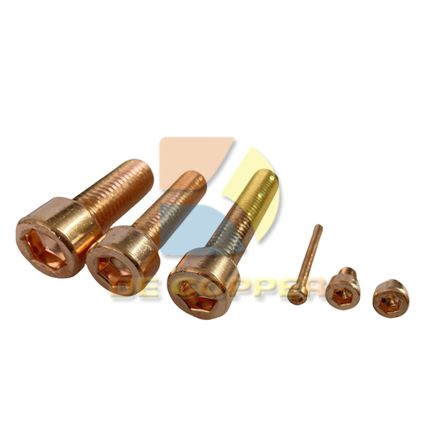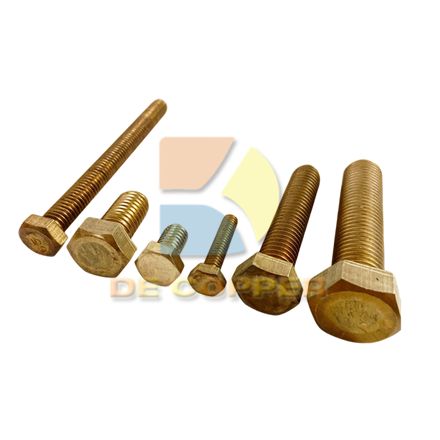close
Choose Your Site
Global
Social Media
Views: 0 Author: Site Editor Publish Time: 2025-07-18 Origin: Site

Think all bolts are screws? Think again.Many people mix them up—and it can lead to costly mistakes.Using the right fastener matters in construction, engineering, and DIY projects.In this post, you'll learn the real difference between bolts and screws.We'll explain how to identify them, when to use each, and why it matters.
A bolt is an externally threaded fastener. But unlike screws, bolts don't cut their own threads.
Instead, bolts go through unthreaded holes and are secured using nuts or threaded inserts. This makes them ideal for joining multiple parts together, especially when strength and reliability are key.
Bolts are usually designed to be tightened by turning the nut, not the head. You'll often see them with hex or square heads for use with wrenches or spanners.
Here are a few common types of bolts:
Bolt Type | Typical Use Case | Head Style |
Construction, bridges | Hexagonal | |
Carriage Bolt | Woodwork, fences | Rounded dome |
U-Bolt | Piping, round objects | U-shaped |
Anchor Bolt | Securing structures to concrete | L or J-shaped |
They're often partially threaded, and materials range from steel to bronze.
A screw, like a bolt, has external threads. But screws don't need nuts to stay in place.
Instead, they form their own threads as they're driven into a surface—like wood, plastic, or even metal. Some screws mate with pre-threaded holes, but many are designed to cut into the material directly.
Screws are tightened by turning the head, typically with a screwdriver or bit.
Common examples of screws:
Screw Type | Material Used On | Drive Type |
Wood Screw | Soft and hardwood | Phillips, Flat |
Sheet Metal Screw | Thin metals, plastics | Phillips, Torx |
Drywall Screw | Wallboard, studs | Bugle, Phillips |
Self-Tapping Screw | Metal or hard plastic | Slotted, Torx |
Screws are usually fully threaded. They're often used where access to only one side of the workpiece is possible.

This is where it starts to get real.
● Bolts usually have a partially threaded shank. The smooth section adds shear strength.
● Screws are fully threaded from tip to head. That gives them better grip in materials like wood.
Feature | Bolt | Screw |
Thread coverage | Partial | Full |
Strength focus | Shear force | Grip force |
Typical material use | Metal-to-metal joints | Wood, plastic, light metal |
Bolts handle structural loads better. Screws hold fast in soft or light-duty jobs.
Bolts need a nut or threaded hole to function. That means you'll likely need access to both sides of your workpiece.
Screws? Much easier. You just drive them into place from one side. That's great for quick tasks.
● Bolts: Insert through holes, tighten with nut
● Screws: Drive directly into material
So, bolts are common in metal fabrication, while screws dominate in woodwork and home fixes.
Here's what you'll need to tighten each type:
Fastener | Tools Typically Used | Example Tools |
Bolt | Wrenches, Spanners, Sockets | Adjustable wrench, socket driver |
Screw | Screwdrivers, Drill Bits | Phillips head, Torx driver |
Bolts require torque from the side (via nut), while screws are tightened head-on.
Now let's talk strength.
● Bolts are generally stronger. That's thanks to the nut + washer combo, which distributes the load and resists pullout.
● Screws, while not as strong overall, grip better in soft or fibrous material. Perfect for wood and plastic.
So if you're building a deck? Go for bolts. Hanging drywall? Screws are your friend.

It's easy to think big = bolt, small = screw. But that's false.
You can have large screws and small bolts. Size doesn't matter. It's the thread behavior and installation method that count.
You might hold a heavy bronze fastener and think, "definitely a bolt." But if it cuts its own threads—it's a screw.
Another myth? “If it uses a wrench, it's a bolt.” Nope.
Many screws have hex heads. Some bolts use slotted heads. The tool needed does not determine the type.
Examples:
● A lag screw has a hex head, but it's still a screw.
● A fully threaded fastener with a Phillips head? Still could be a bolt—if it's used with a nut.
So, never judge a fastener by its head alone.
In the fastener world, names don't always match technical definitions. That's where things get tricky. Many fasteners blur the lines between bolts and screws—making classification confusing, especially for beginners or even seasoned DIYers. Let's break down three common examples of hybrid fasteners and explain why they're not always what they seem.
This one surprises a lot of people.
Machine screws look like screws, behave like bolts, and live in a gray zone. Technically speaking, if a fastener is externally threaded and used in a pre-tapped hole or with a nut, it qualifies as a bolt—not a screw.
Most machine screws don't create their own threads. Instead, they're installed into pre-threaded holes, just like bolts. Some can also be paired with nuts to fasten materials. That checks off two “bolt” boxes.
So why do we still call them screws? Mostly tradition and industry habit. You'll find them labeled as “machine screws” in catalogs and hardware stores, even though they're mechanically bolts.
Feature | Machine Screw (a.k.a. Bolt) |
Used with nut | Yes (optional) |
Creates its own thread | No |
Tightened by head | Yes |
Installed into tapped hole | Yes |
In short, machine screws are bolts in disguise—technically bolts, culturally screws.
Despite the name, lag bolts behave nothing like true bolts.
● They don't go through pre-drilled holes.
● They don't use nuts.
● They cut their own threads into wood.
These are all characteristics of screws. The only reason they're called “lag bolts” is because of their large hex heads and the need to use a wrench during installation.
But that's a red herring.
Tool type and head shape don't define the fastener class. Threading behavior does.
So when you install a lag bolt by driving it into wood—creating threads as it goes—you're technically installing a lag screw.
Feature | Lag Bolt (a.k.a. Lag Screw) |
Used with nut | No |
Creates its own thread | Yes |
Tightened by head | Yes |
Installed into wood directly | Yes |
The takeaway? Lag bolts are really screws, despite their bulky build and misleading name.
This one is extra tricky.
Sometimes, you'll find a fastener that looks exactly like a bolt—hex head, sturdy body, threaded shaft—but the tip is specially designed to cut threads as it enters the material.
That tip is the key.
Even though the fastener looks like a bolt, if it cuts its own threads, it behaves as a screw. True bolts don't form threads—they rely on nuts or pre-threaded holes.
These types of fasteners are often called thread-cutting bolts, but they're technically screws because of how they function.
In fact, many manufacturers list them under “screws” but include “bolt” in the name just for familiarity.
Feature | Thread-Cutting Bolt (a.k.a. Screw) |
Used with nut | No |
Creates its own thread | Yes |
Tightened by head | Yes |
Common head type | Hex or Torx |
So, again, appearance doesn't always tell the truth. Function does.
Need a nut to hold it? Use a bolt. Driving it directly into wood or metal? That's a screw. Need strong, reusable fastening? Choose a bolt. Want a tight grip with fewer parts? Go with a screw. Use this guide when picking fasteners for your next project. It saves time—and helps you build better.
A: Sometimes. Screws work well when only one side is accessible, but bolts offer stronger, reusable fastening for heavy-duty tasks.
A: Yes, generally. Bolts use washers and nuts, spreading force and offering greater strength in structural applications.
A: The joint may fail, loosen, or strip the material. Using the right fastener ensures durability and safety.
A: Bolts need nuts or pre-threaded holes. Screws cut or match threads and are driven by the head.